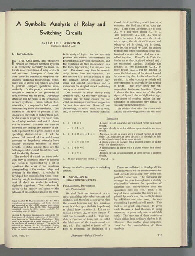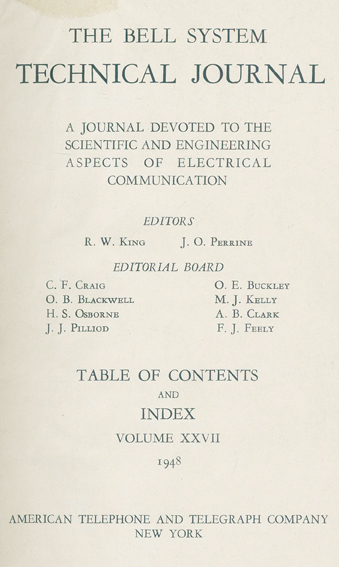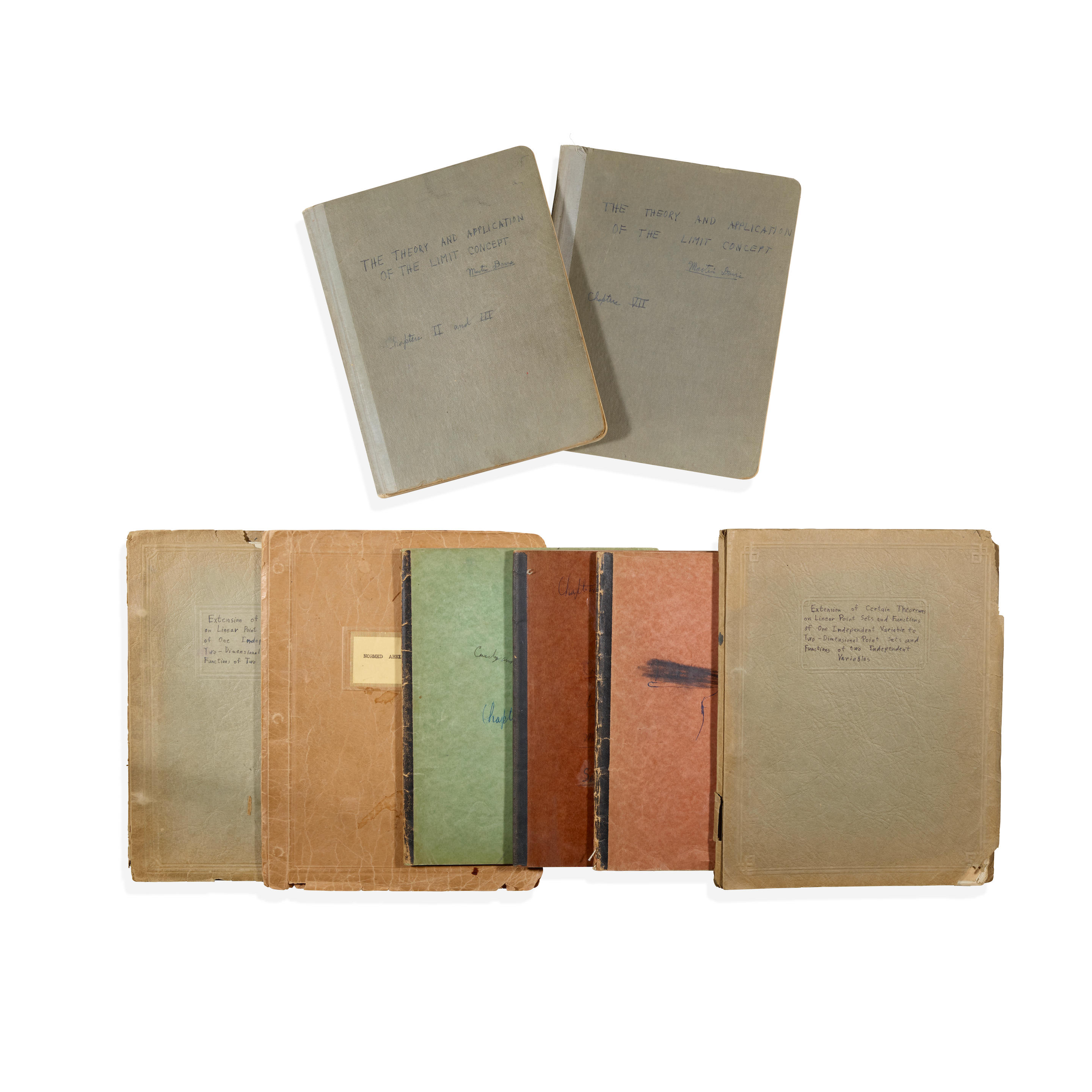COMPUTER.] -- SHANNON, Claude E. (1916-2001). "A symbolic analysis of relay and switching circuits." Pp. 713-23. In: Transactions of the American Institute of Electrical Engineers 57 (1938). New York: American Institute of Electrical Engineers, 1938. 4 o. Original dark blue cloth. FIRST EDITION OF THIS LANDMARK PAPER IN THE DEVELOPMENT OF THE DIGITAL COMPUTER. Claude Shannon's master's thesis has been frequently called the most important master's thesis of the twentieth century with respect to the influence it had on the development of the electronic and computer industries. Shannon obtained B.S. degrees in mathematics and engineering in 1936 from the University of Michigan, and later that year accepted the post of research assistant at MIT's Department of Electrical Engineering, where he began working toward an advanced degree. While working with the Bush differential analyzer at MIT, Shannon became interested in the theory and design of complicated relay and switching circuits like the ones used in telephone systems. As an undergraduate he had studied symbolic logic and Boolean algebra. Shannon submitted this thesis in 1937 at the age of 21, only one year after Turing published Non-Computable Numbers . In his thesis Shannon recognized that the true/false values in Boole's two-valued logic were analogous to the open and closed states of electrical circuits. From this it followed that Boolean algebra could be used to describe or to design electrical circuits. Because Boolean algebra, invented by George Boole in his books, The Mathematical Analysis of Logic (1847) and The Laws of Though t (1854), makes it possible to devise a procedure or build a device, the state of which can store specific information, once Shannon showed that electrical circuitry can perform logical and mathematical operations, and can also store the result of these operations, the inference could be drawn that it was possible to design calculating machines using electrical switches. When Shannon wrote his thesis he was thinking of electro-mechanical relays used as switches in telephone technology, rather than vacuum tubes that would be used in electronic computers because of their higher speed. But of course the same principles applied to both technologies. From Gutenberg to the Internet 12.1; Origins of Cyberspace 363.
COMPUTER.] -- SHANNON, Claude E. (1916-2001). "A symbolic analysis of relay and switching circuits." Pp. 713-23. In: Transactions of the American Institute of Electrical Engineers 57 (1938). New York: American Institute of Electrical Engineers, 1938. 4 o. Original dark blue cloth. FIRST EDITION OF THIS LANDMARK PAPER IN THE DEVELOPMENT OF THE DIGITAL COMPUTER. Claude Shannon's master's thesis has been frequently called the most important master's thesis of the twentieth century with respect to the influence it had on the development of the electronic and computer industries. Shannon obtained B.S. degrees in mathematics and engineering in 1936 from the University of Michigan, and later that year accepted the post of research assistant at MIT's Department of Electrical Engineering, where he began working toward an advanced degree. While working with the Bush differential analyzer at MIT, Shannon became interested in the theory and design of complicated relay and switching circuits like the ones used in telephone systems. As an undergraduate he had studied symbolic logic and Boolean algebra. Shannon submitted this thesis in 1937 at the age of 21, only one year after Turing published Non-Computable Numbers . In his thesis Shannon recognized that the true/false values in Boole's two-valued logic were analogous to the open and closed states of electrical circuits. From this it followed that Boolean algebra could be used to describe or to design electrical circuits. Because Boolean algebra, invented by George Boole in his books, The Mathematical Analysis of Logic (1847) and The Laws of Though t (1854), makes it possible to devise a procedure or build a device, the state of which can store specific information, once Shannon showed that electrical circuitry can perform logical and mathematical operations, and can also store the result of these operations, the inference could be drawn that it was possible to design calculating machines using electrical switches. When Shannon wrote his thesis he was thinking of electro-mechanical relays used as switches in telephone technology, rather than vacuum tubes that would be used in electronic computers because of their higher speed. But of course the same principles applied to both technologies. From Gutenberg to the Internet 12.1; Origins of Cyberspace 363.



.jpg)











Try LotSearch and its premium features for 7 days - without any costs!
Be notified automatically about new items in upcoming auctions.
Create an alert